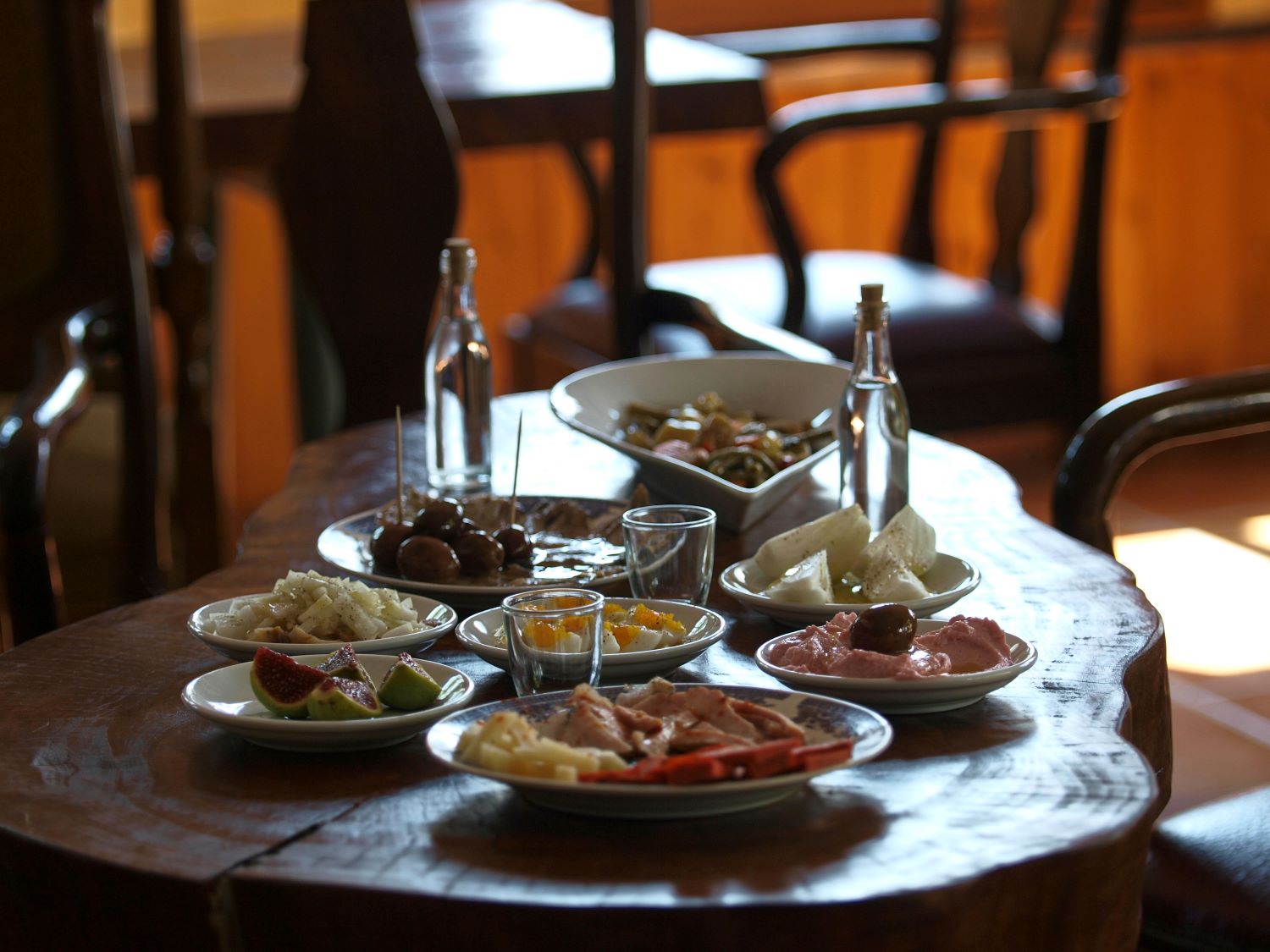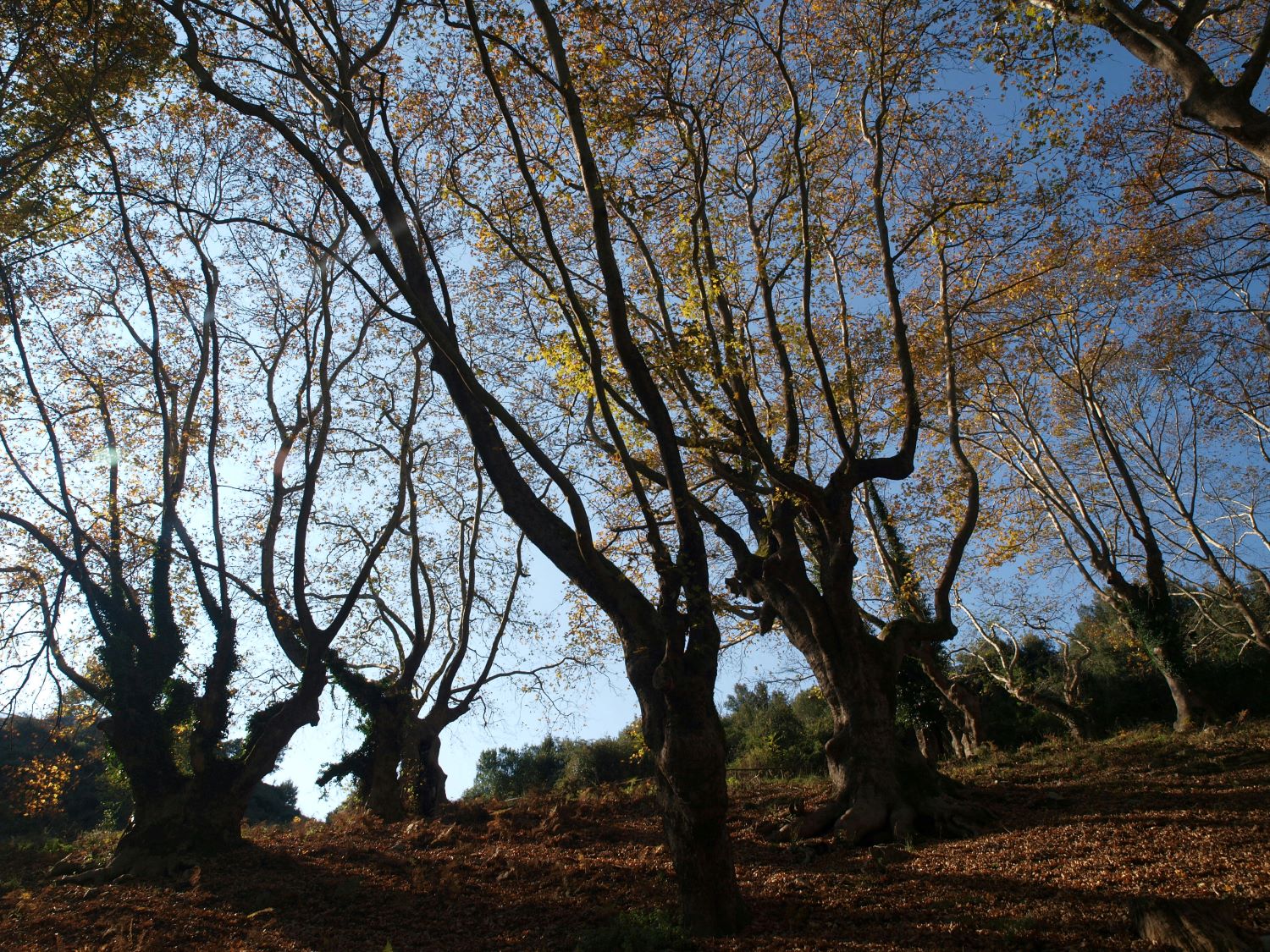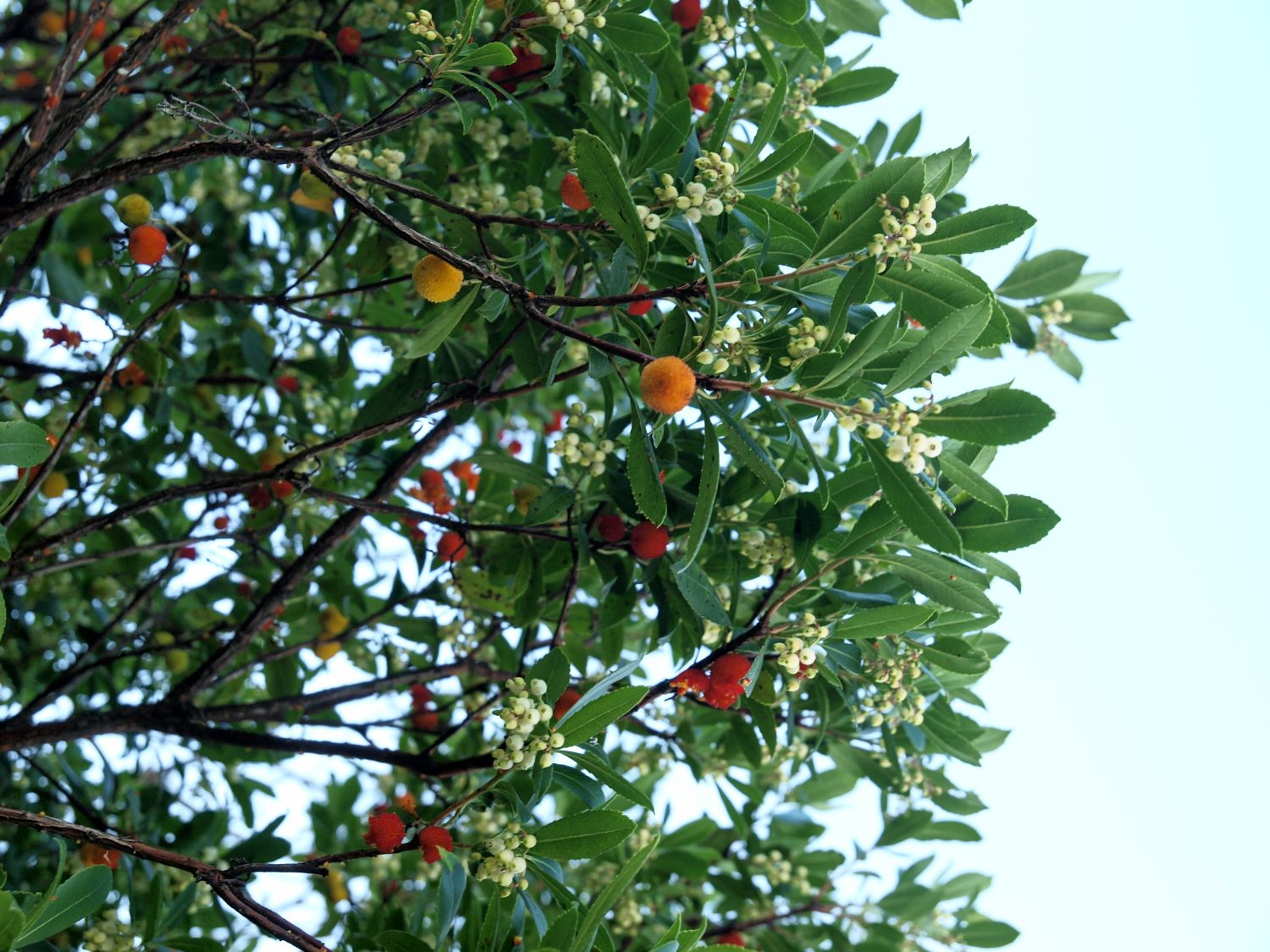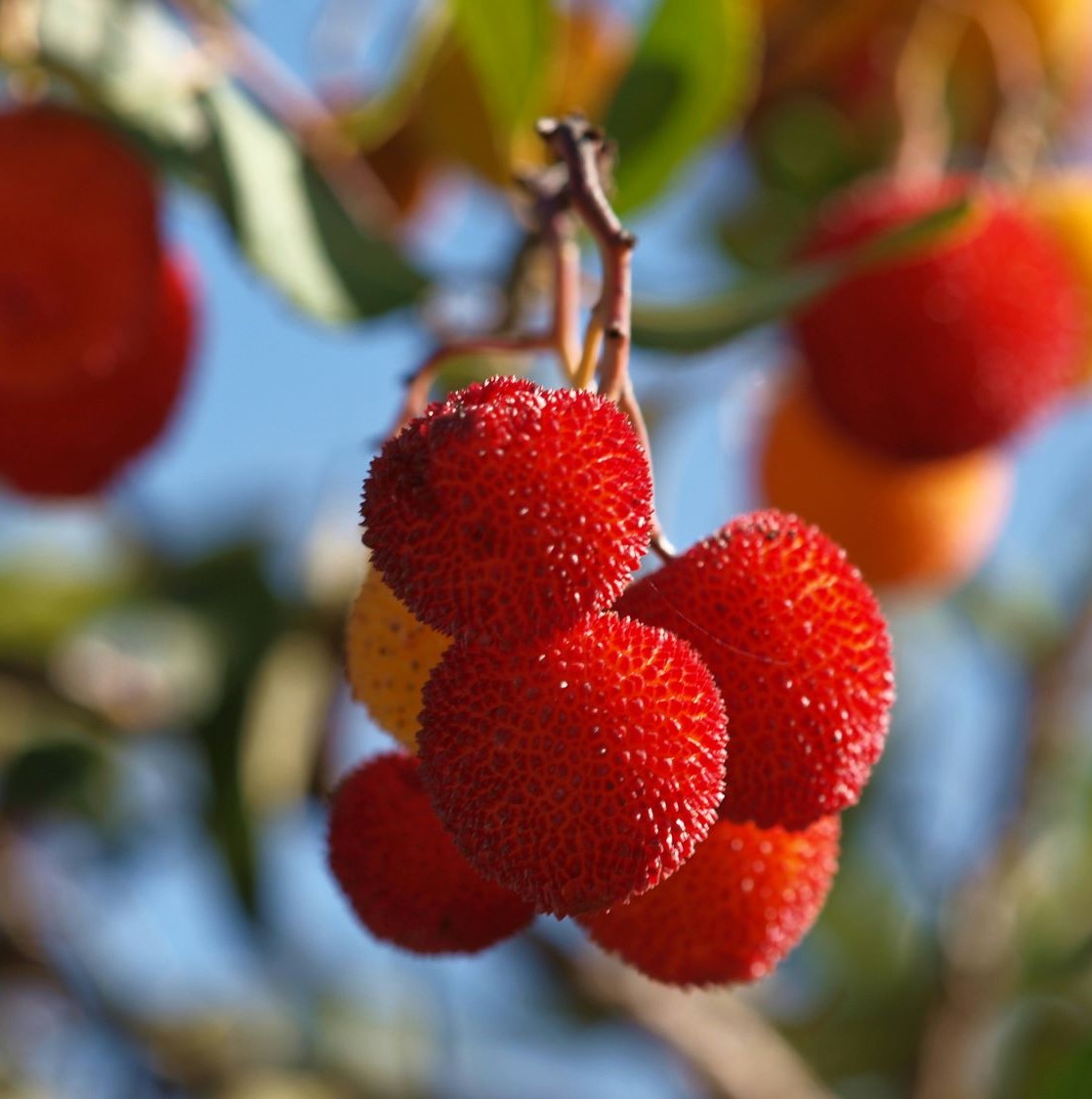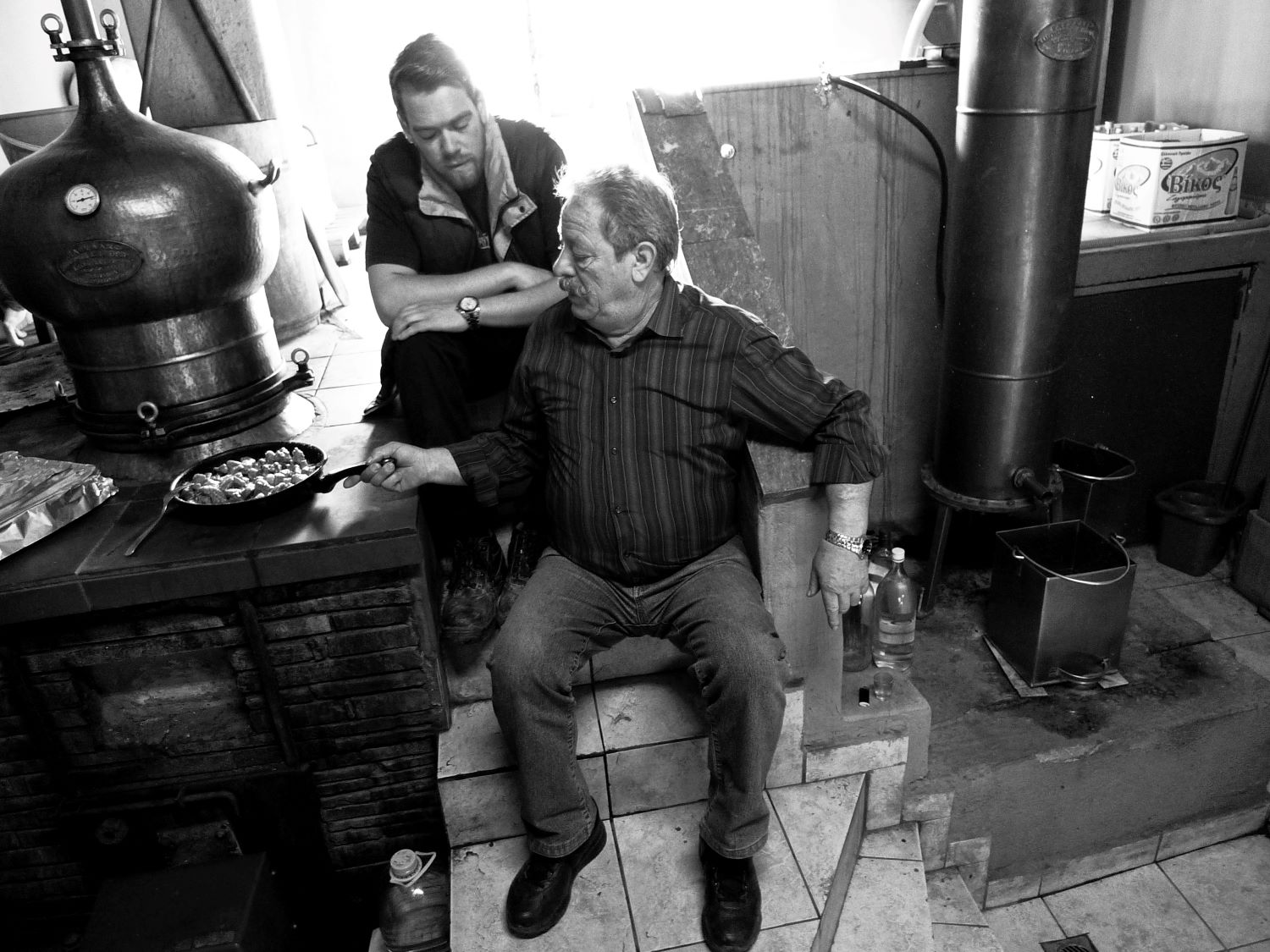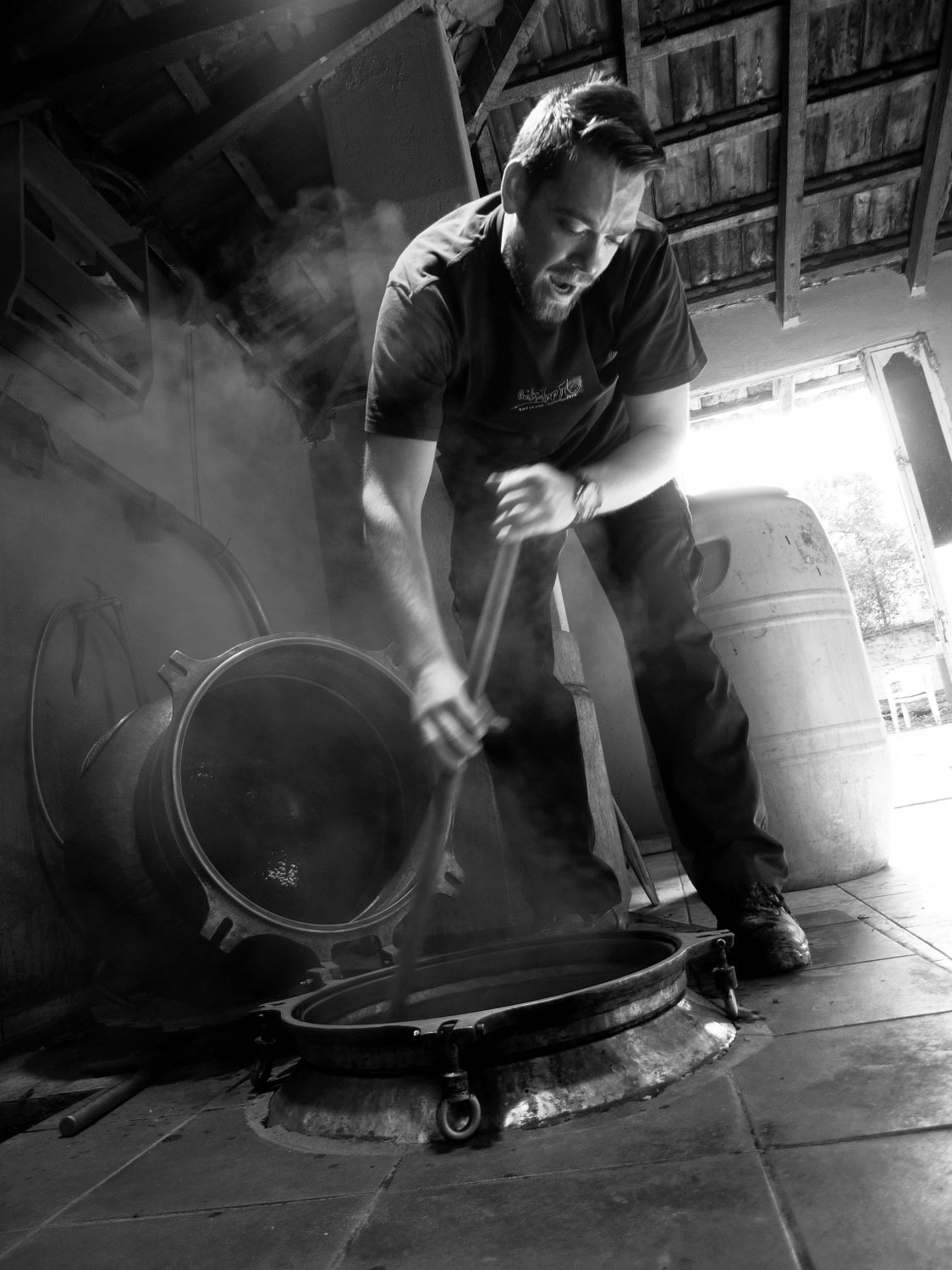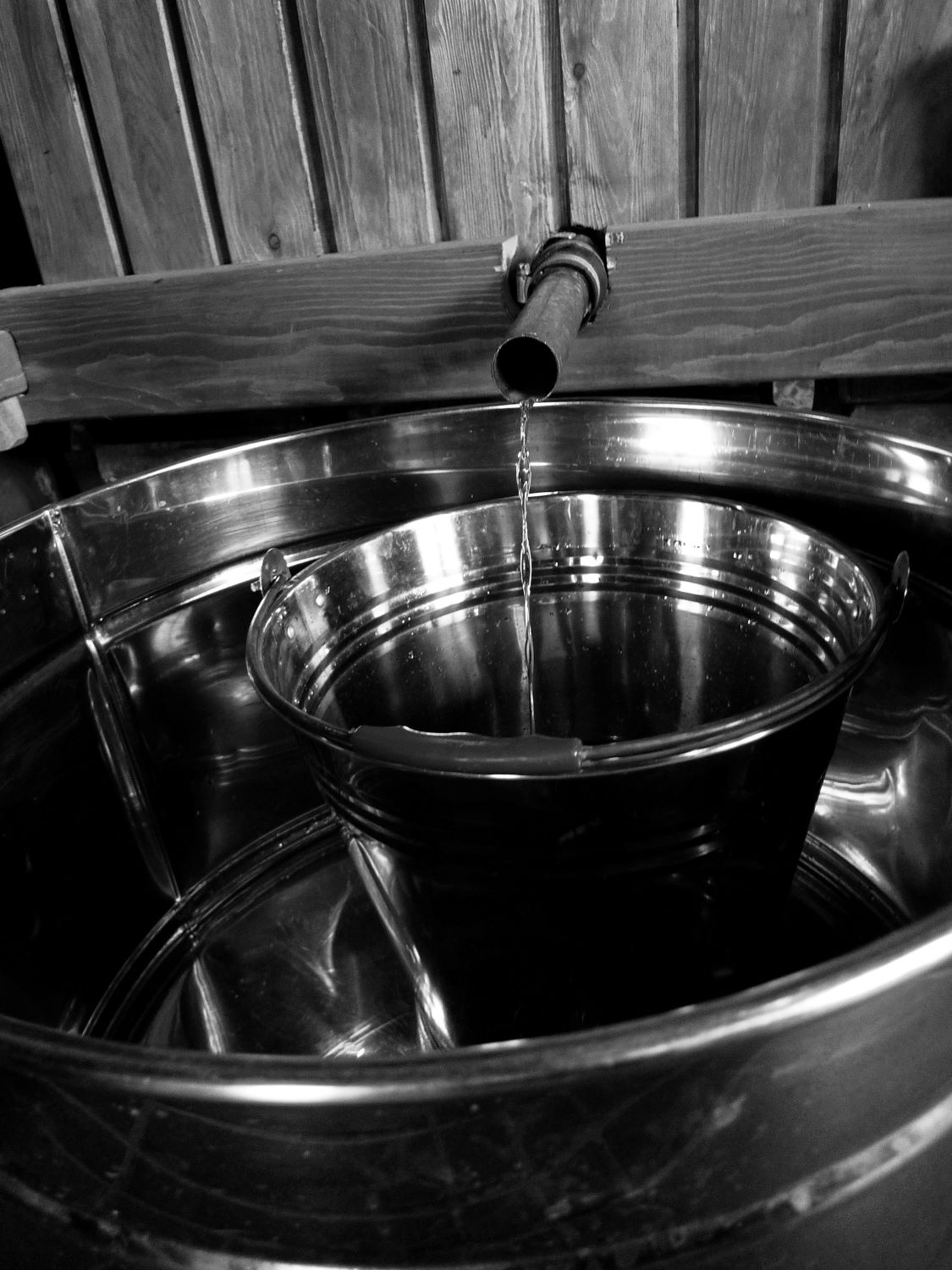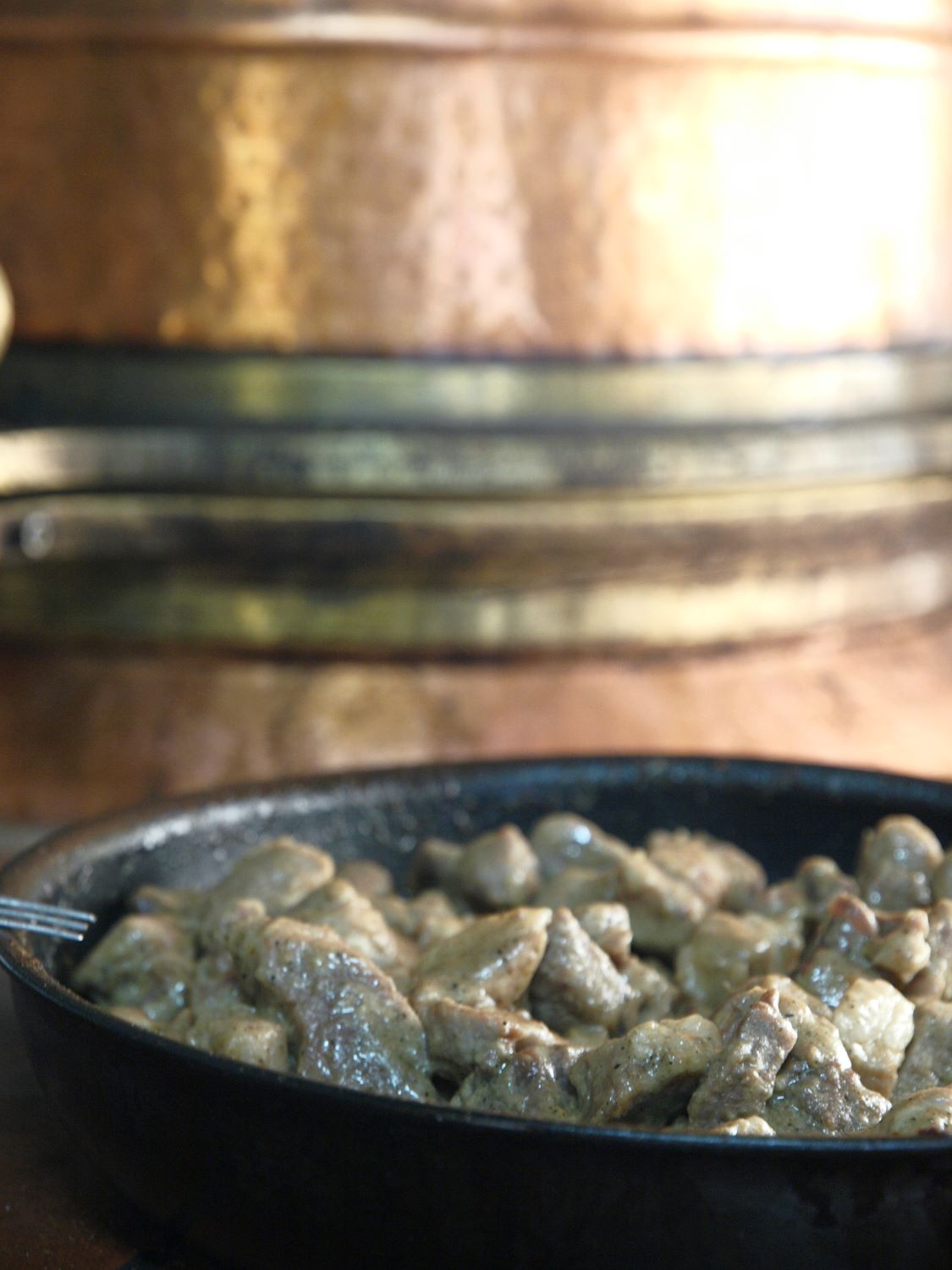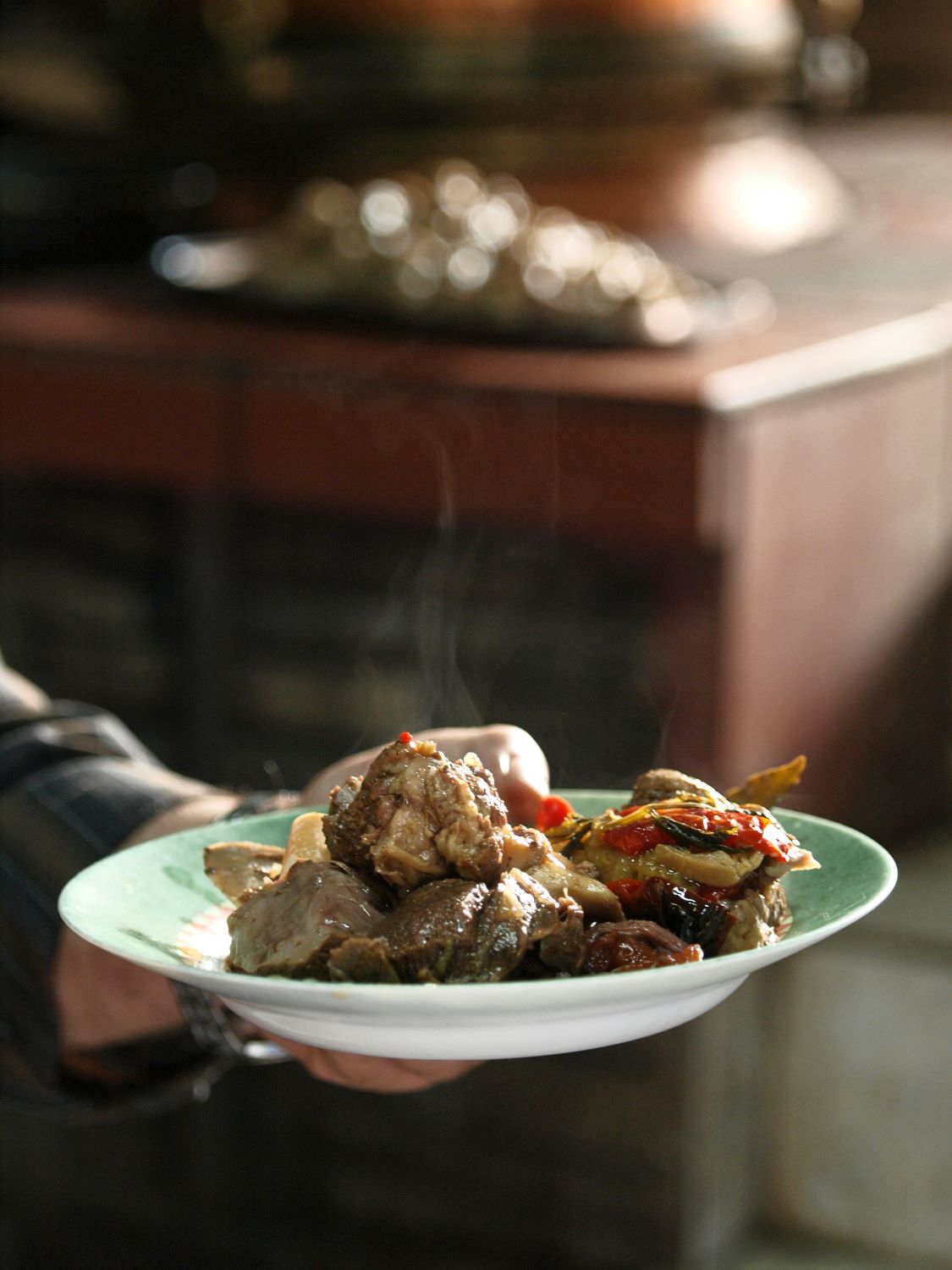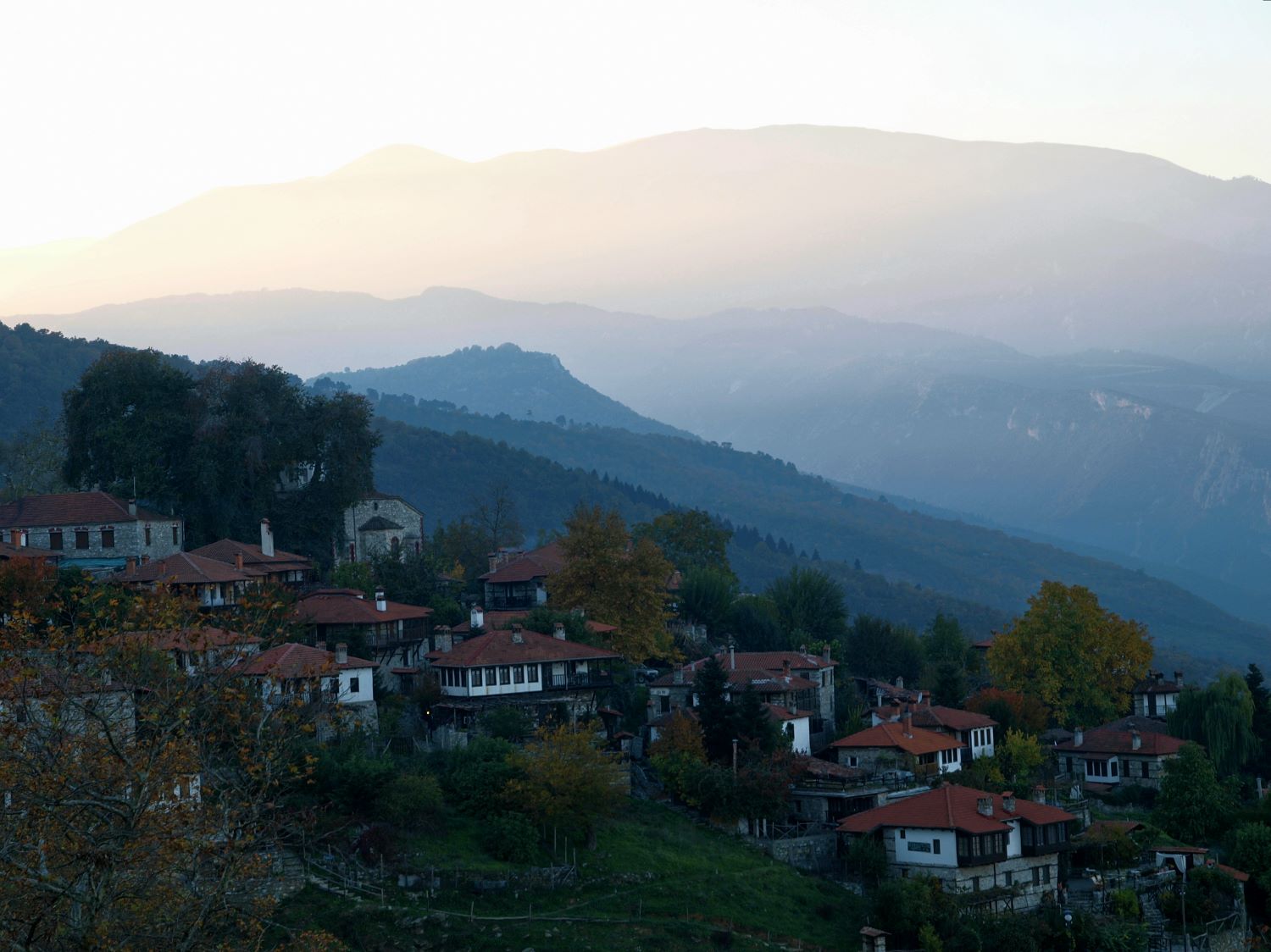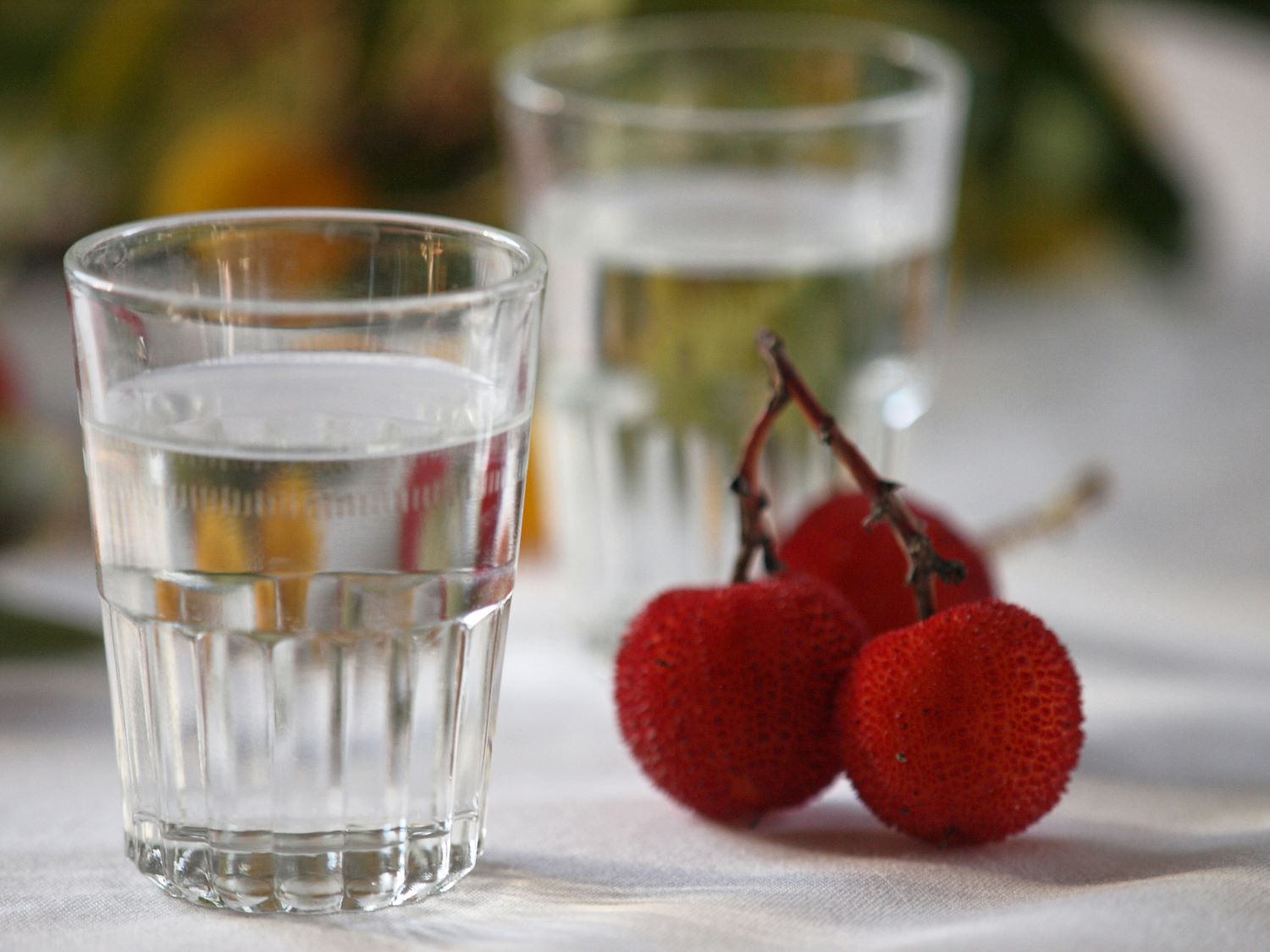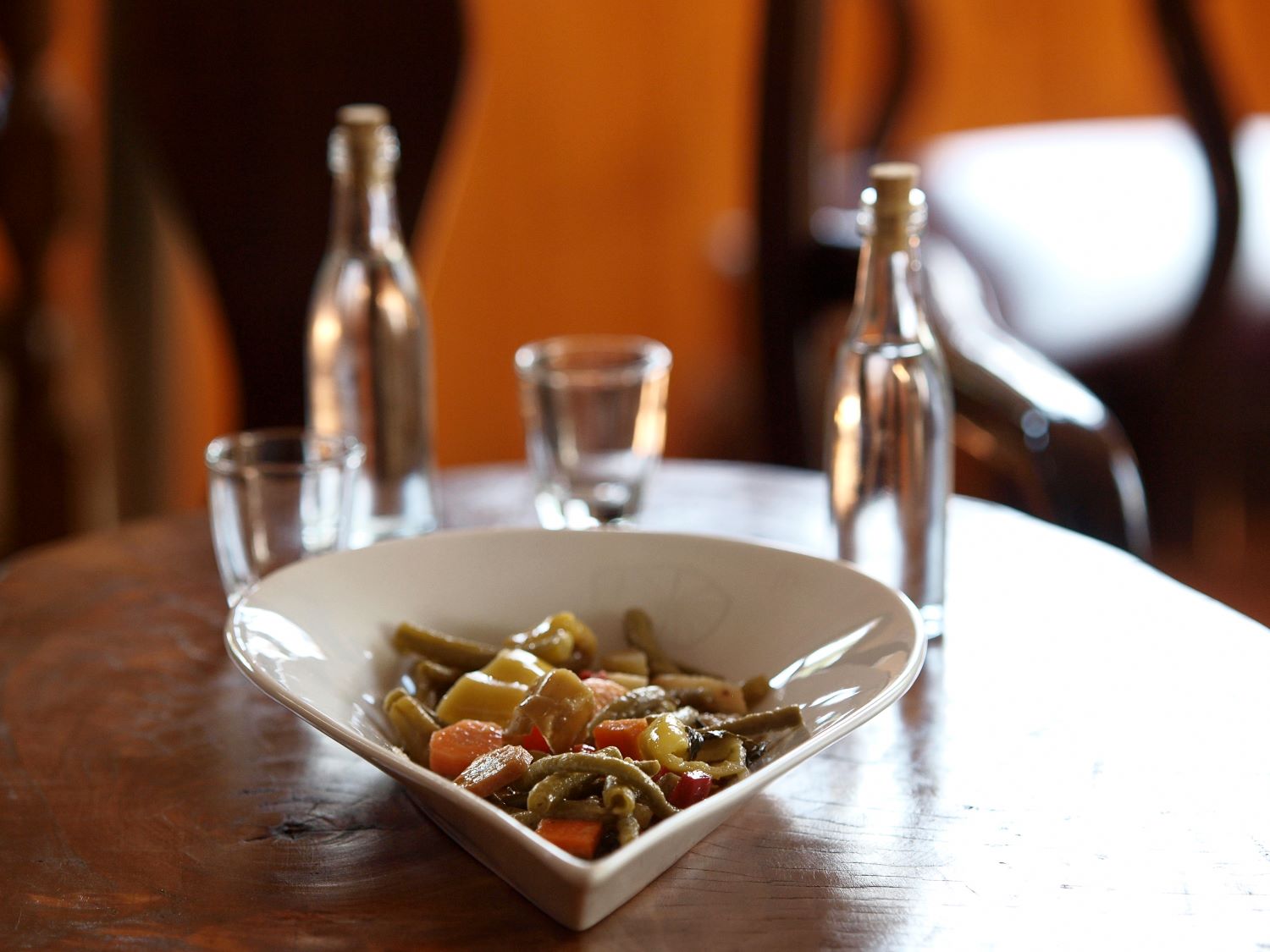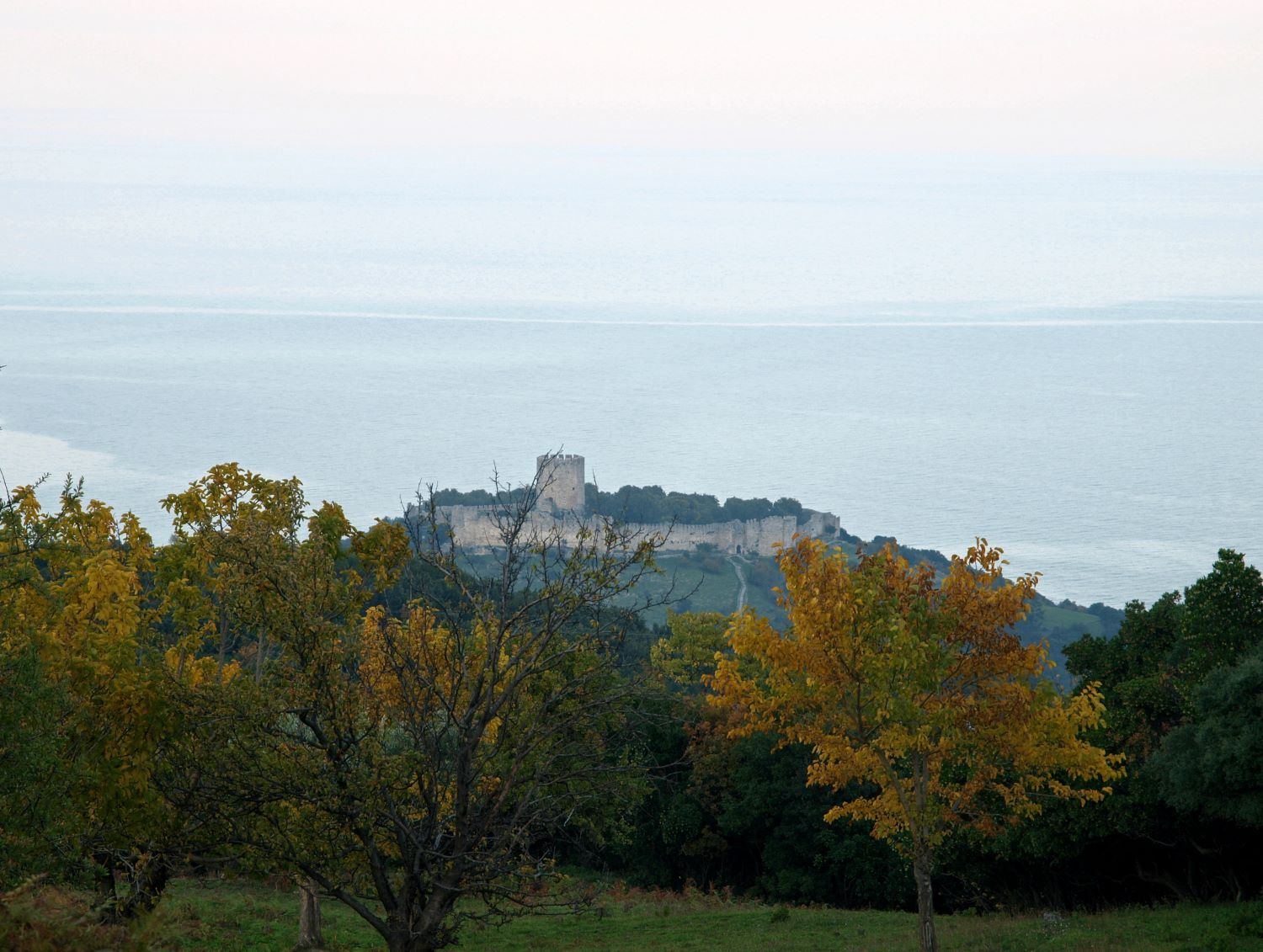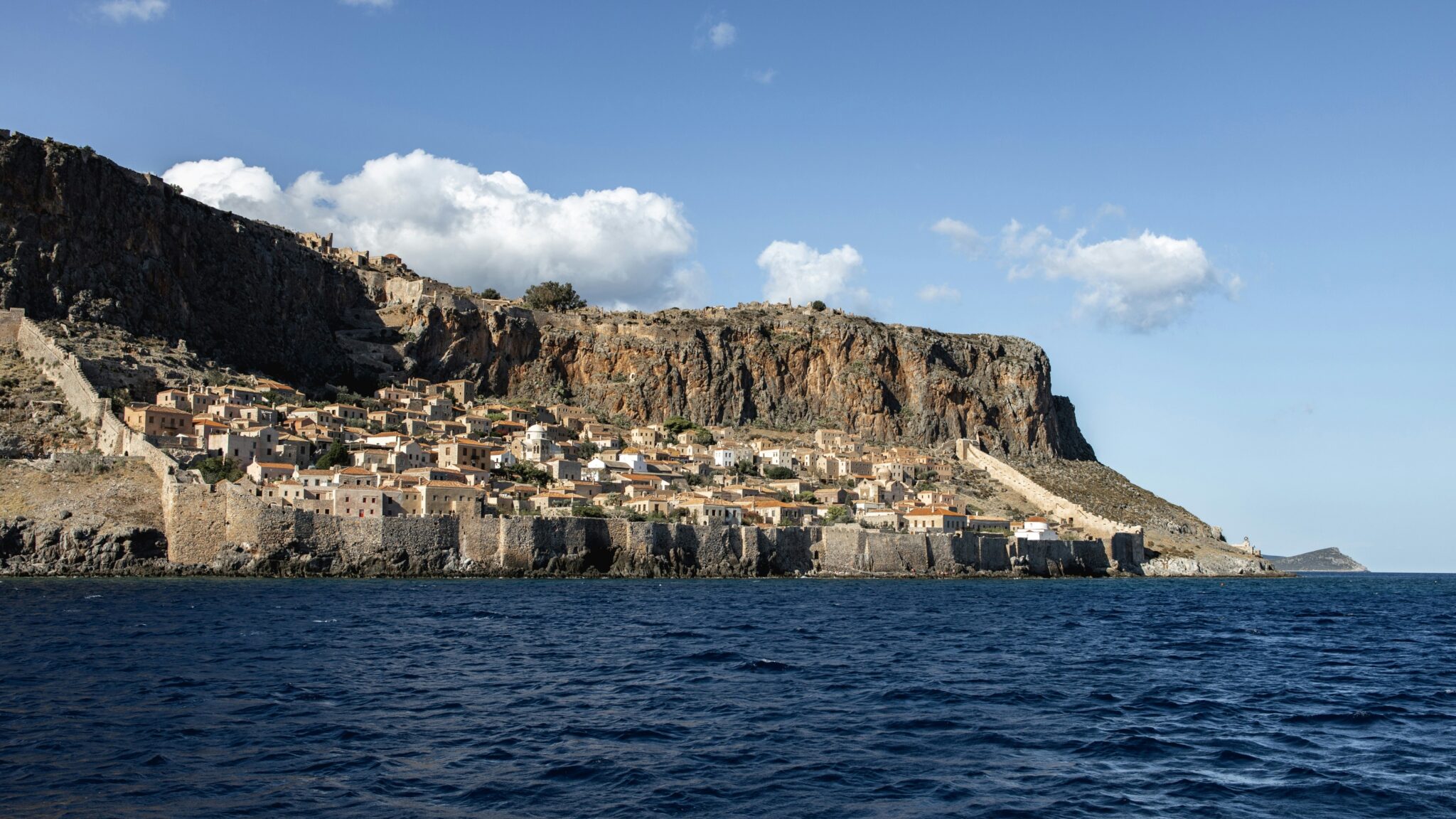Embracing the “revered slopes of Olympus” invites a myriad of impressions, both grand and humble. It brings forth a recognition of the small everyday pleasures, such as the indigenous tsipouro derived from arbutus berries, the fruit of the so-called ‘strawberry trees’. This ritual, beginning in the autumn, reaches its peak with the distillation process at the end of May, serving as a fond farewell to spring and a heartfelt welcome to the forthcoming summer. A modest celebration unfolds, cascading down the slopes of Lower Olympus, travelling through its captivating traditional settlements – Paleo Panteleimonas, Palea Pori, and Ano Skotina – and onward, past the shadowy forests and the enigmatic ravines, all the way to the majestic Platamonas Castle on the Aegean mainland.
The ascent towards Paleos Panteleimonas offers a quintessential view of the region, where the castle is beautifully framed by the vibrant array of arbutus berries. These fruits, transitioning from early ripeness yellow to near-ripe orange, and finally to mature red, present a striking spectacle against the backdrop of the azure sea. What truly sets the tsipouro-making ritual apart is not just the process itself, but the divine aura of the mountain that sanctifies everything it encompasses – the landscapes, the produce, the drinks, the meze, the myths, and the emotions. All are caught up in its ethereal charm, lifting them to a sublime realm.
As one treads upon the musical carpet of dry plane-tree leaves, the mythology of Olympus is palpable. The bare branches, now swaying like dancers in a celestial ballet, create an enchanting setting in the gorge of Livithra, the unique homeland of the musical Orpheus, who dared to descend even into Hades in search of his lost love, Eurydice. This timeless symphony of Olympus – echoed by the waterfalls cascading through the gorges of Orlias, Enipeas, Kori, and Vathres – enriches the mystical aura that envelops the universe of this mythical mountain.
As autumn gives way to winter, the aura of Olympus gently caresses the landscapes of the strawberry trees. These trees grow without human intervention, bearing fruit that seems to serve no purpose, feeding only the birds in the sky and the beasts in the woods. But in nature, nothing is without purpose, especially not the arbutus berries. Picking from their vibrant array is a joy, each fiery, juicy fruit a treasured find. As you gather, you’re treated to views of the landscape’s indescribable charm. This aura, this divine mountain essence, will kickstart the natural yeasts in the air and within the berries themselves, setting in motion a slow, wild fermentation that lasts until the end of May. Then, for a few days, the stills of Lower Olympus, and recently of Vrastama in Halkidiki, blaze back to life.
We learned the secrets of distillation in the stills of Lower Olympus, particularly in the Hatzis distillery in Neos Panteleimonas, on the winding road towards Paleo. Now, alongside the tsipouro, the spirit of the new generation bubbles with fervor. Vasilis embodies the enthusiasm of this continuity, but his father, Michalis, still directs the distillation ritual. He hosts with his own unique meals, sharing not just food, but companionship and pleasure.
The atmosphere is thick with the scent of tsipouro, traditional food, and good company, a joyous conspiracy of sorts. It’s a song of initiation into the mysteries of camaraderie around the laden table, a ceremonial dance before a still dripping with joy. Here in the north, the distillation process is always double, and the power of tsipouro, whether from grapes or arbutus berries, grappa or sweet anise, is irresistible.
Mr. Michalis fuels the revelry with his unique fried dish as a welcome, followed by goat cooked in a clay pot and belly-stuffed zygouri. These pure, authentic flavors of the mythical mountain are served directly from the traditional oven, fueled by wood from the surrounding forests, and placed on the table in front of the still.”
Michalis’s pan-fried dish – that is, pork cut into hearty chunks – is first simmered in its own juices, with a judicious addition of water. Once it’s reduced, it’s flavored and spiced with white wine, along with the spices – garlic powder, a touch of pepper, salt – and mustard diluted in wine with a spoonful of flour, creating a delightful sauce in which the food simmers and binds together.
The stuffed zygouri (12 month old lamb), like the goat cooked in the clay pot, undergoes a slow process that seems to follow the rhythm of the distillations. It begins the day before with the arrangement of the meat in the appropriate vessel – clay or a metal pot – along with vegetables and seasonings. Bay leaf, black pepper, salt, garlic, old onion, celery, tomatoes, peppers – red and green -, carrots and a few zucchinis. These simmer all night in the oven, without any oil, only a little water, a glass, and, mainly, their own juices. This not only suffices to stew them succulently without drying them out but also provides an extra delicious possibility. To drench and simmer the pasta we add – penne, in this case – after we remove the cooked meat and the melted vegetables.
A good “kazantzis“, as they call the distiller in the area, Michalis says, is the one who makes everything out of nothing. Because the grape stems that become flaming tsipouro seem useless at first glance, fit for throwing away. And the arbutus berries, no matter how ripe they become and take on the most beautiful and promising color, are inedible. If they are not collected at the end of spring and the beginning of winter, they will be kept for months in large barrels to ferment, until their transformation into fragrant tsipouro.
The alchemy of distilling this wild, stray fruit is the same as the distillation of grape tsipouro. Only that the arbutus berries have the peculiarity of needing stirring in the open cauldron until they start to boil, because, being heavy, they sit at the bottom and “scorch,” as Vasilis says, and don’t give you a good distillate. When they start boiling well, he closes the cauldron, the vapors condense passing through cold water, and the tsipouro begins to drip enticingly. In the past, during the second distillation, they always added a lot of sweet anise. Now, they flavor the tsipouro moderately or don’t add any sweet anise at all.”
The distinct taste of Arbutus Berry tsipouro is truly an experience in itself. The unique thing about it is that, as the berries aren’t generally eaten, the spirit doesn’t remind you of any flavor you’ve tasted before. It carries its own one-of-a-kind aroma, and when you take a sip, as Vasilis puts it, it’s like getting a taste of the forest. The version without anise is particularly interesting because, let’s face it, anise-flavored spirits can often taste like ouzo and the accompanying seaside appetizers.
Arbutus trees grow wild in the forest and aren’t cultivated, so their fruits, picked by hand, are wild and completely natural. With no artificial additives in the mix, the tsipouro made from distilling fermented Arbutus berries is as natural and pure as it gets. The flavor brings back to your palate forgotten natural tastes from our foraging past, like the sweet-bitter balance and a unique fruity taste.
The anise-free Arbutus tsipouro pairs well with the earthy flavors of the harvest. In the north, all the garden’s goodies get pickled and stored to last through the long, tough winter and the sleepy period that follows. But now, when the earth is at its most giving, rewarding the hard work of the gardener, all the garden’s treats, with their diverse flavors, get sealed into glass jars. And they’re not just preserved – they’re made even better by being combined with vinegar and spices, ready to become, once matured, the ideal – we believe – companion to the Arbutus tsipouro.
The most generous, colorful, and flavorful jar of pickles that I’ve ever seen and tasted is also tied in my mind to the mysteries of Olympus. In Dion, possibly the most revered power center of the Macedonian kings, surrounded by one of Greece’s most atmospheric archaeological sites, Katerina Safeti set the perfect scene for us to enjoy the tsipouro.
This medley of garden produce, unproccessed and unadulterated, opened a dance of flavors: beans that Katerina herself cultivates in her garden, using seeds she brought from Tinos, carrots, peppers – green, yellow, and red ‘Florinis’ – celery root, tomatoes, and whole cloves of garlic. After blanching the beans, she let them cool in the pot, then mixed them with the remaining vegetables, seasoning them with coarse sea salt, and adding half vinegar and half olive oil. The mixture did not cover the vegetables, instead leaving them open, exposed to the aura of Olympus and the mist of its waters. They simmer for quite some time in the pot on low heat before they start to bubble. She then transfers them to sterilized jars. The liquid mixture barely covers the vegetables, softening them.
And the taste of the earth did not end with the mixed pickles, but appeared more authentic and purer, within the small plates with quartered fresh figs and old onions, seasoned with pepper and olive oil, almost in their primitive, natural state. Close by was the pickled cucumber. As we said, the tsipouro from Arbutus is mainly to stimulate the appetite, but if our appetite pulls us, nothing stops us from continuing to drink even with the main meal, inaugurating a new story of joy, to the health of our souls.
Nikos G. Mastropavlos is a journalist, creator of eudemonia.gr, a website dedicated to the culture of everyday pleasures in Greece and Cyprus.
Read also:
8 Mythical Experiences on Mount Olympus, Greece
Greece: Mount Olympus was designated a National Park –What’s changing



